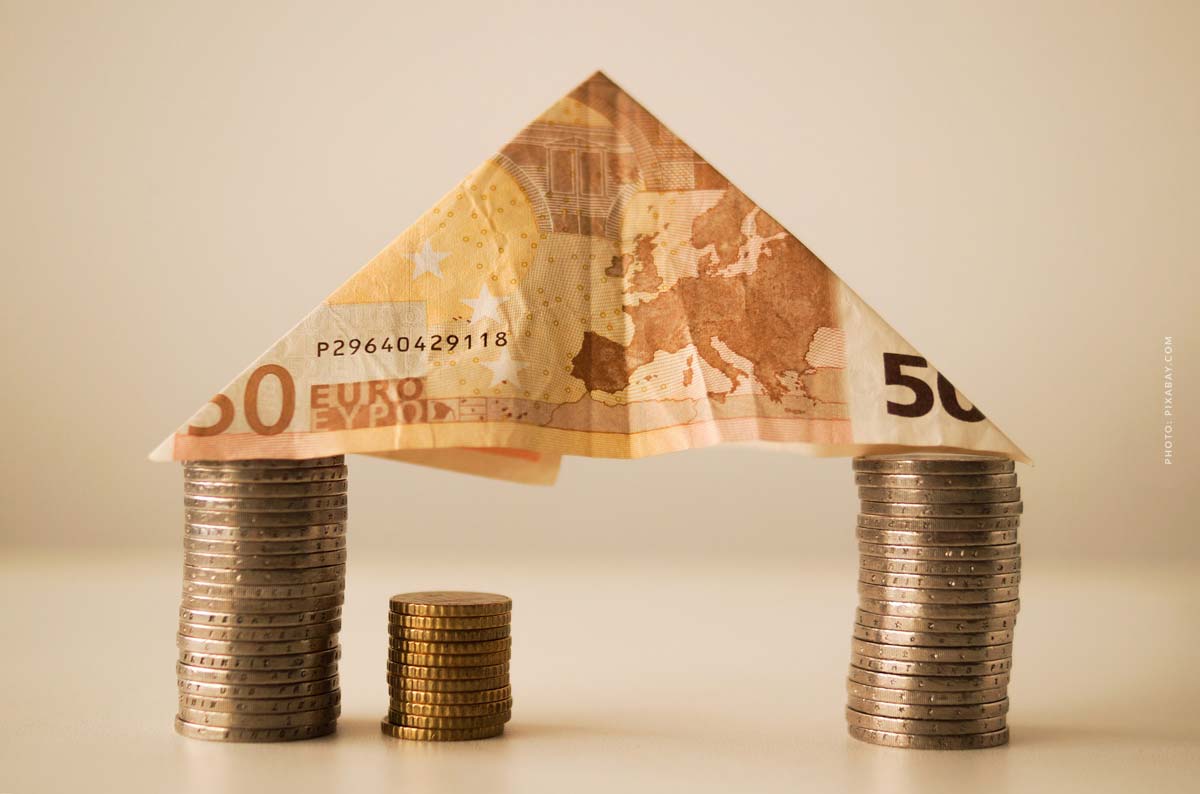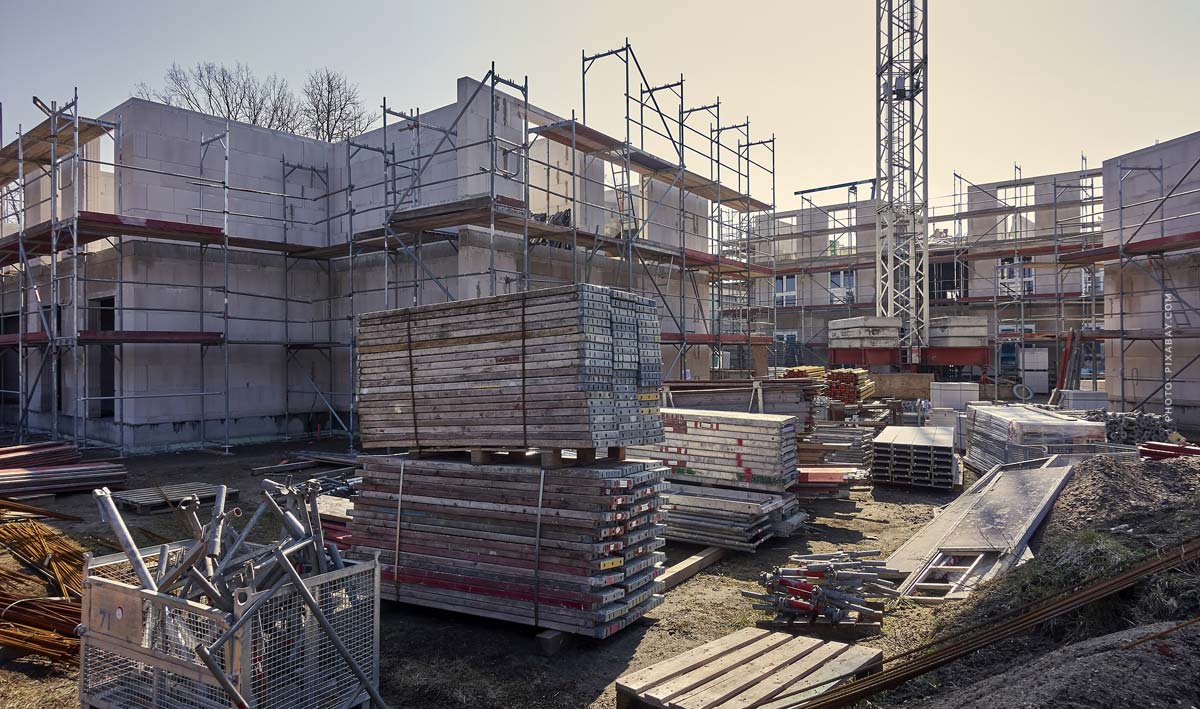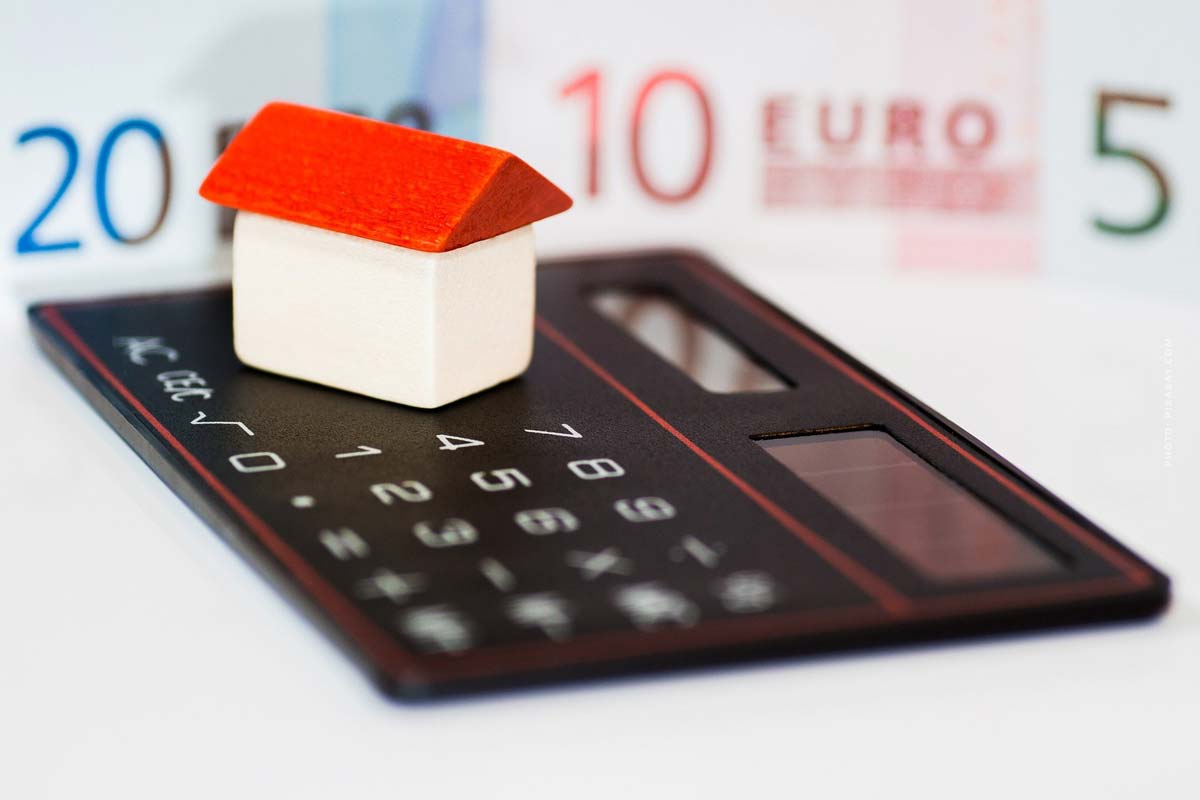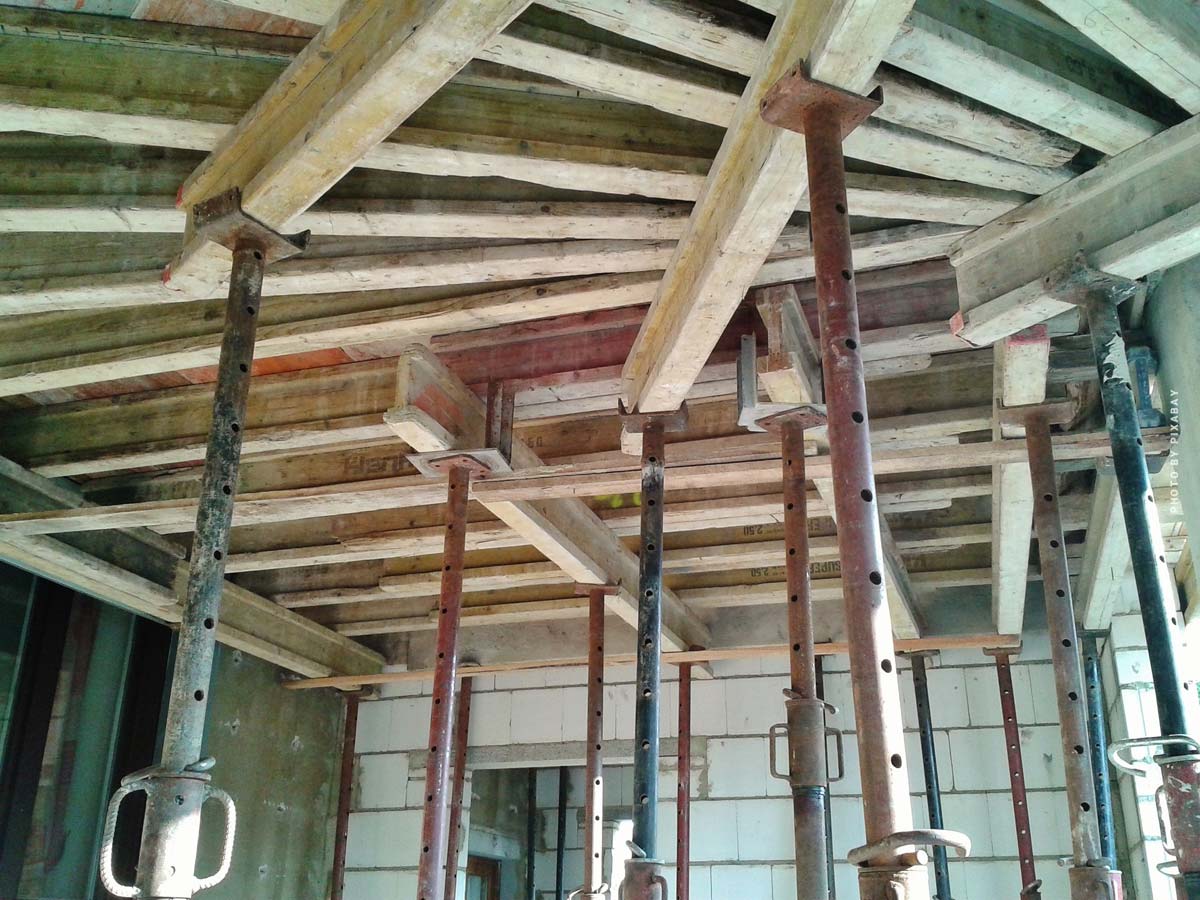Crowdinvestment real estate: experience, advantages, disadvantages in comparison + tips
Crowdinvestment Real Estate – Not everyone has the necessary equity or cash flow (regular income) to buy their own house or condominium. Crowdinvesting has many advantages. For example, little equity, various properties as an investment opportunity, risk minimization through capital diversification and extensive participation (fixed interest rate, profit-related distribution and participation upon sale). Real estate is also extremely useful as a retirement investment because it is not subject to inflation (depreciation of money). One of the best investment alternatives is therefore crowdinvesting with providers from 500 euros, simply put: real estate investment for everyone.
Crowdinvesting: explanation, advantages and disadvantages
Too little equity, too little time, no problem! Crowdinvesting in real estate allows you to invest with smallest amounts. My recommendation for small investments starting at 500 euros are providers like Exporo and InRento.
Let’s start with basics:
What is crowdinvesting?
First of all, what is crowdinvesting?
A very simple comparison would be “a corporation“. The company sells various shares to individuals and institutions. Thus, many “participate” in a company and give it the necessary financing for growth. It works the same way with crowdinvesting in real estate.
Instead of one large investor, shares are spread to many “small” investors. This allows people to invest in real estate who either do not have the necessary credit rating, not enough equity or both. There are several providers for this, such as Bergfürst, Engel & Völkers, Exporo or also InRento, which you will also find in a list later.
More and more want to participate in the real estate market. Also Haufe reports this month“The swarm flies on real estate“, let’s look at the advantages and disadvantages.
Advantages of real estate crowdinvesting
As already learned in the introduction, you as an investor have some advantages, such as the low equity, the various properties as investment options, risk minimization through capital diversification, but also an extensive participation (fixed interest rate, profit-related distribution and participation upon sale).
- Little equity – start from 50 – 100 Euro
- Once registered, various investment options
- Transparency – contact with construction companies possible (information)
- Risk minimization – capital spread over several projects
Compensation and Disbursements:
- Fixed interest rate
- Profit-related distribution
- Participation in the exit case (sale of the property)
Disadvantages and risks for investors
As always, there are advantages, but also disadvantages that you should consider. Here also a more detailed article in Capital“Risky game“. After that you will know all the disadvantages and risks in detail.
- No right of co-determination (participatory loan)
- Capital commitment over a long period 5+ years
- Total loss when projects fail
- Too much participation – loss of overview
How does crowdinvesting in real estate work?
In the vast majority of cases, a property is to be developed (renovated or completely rebuilt).
With regular real estate investment, one would now specifically look for a partner for financing. With crowdinvestment, however, owners talk to the crowdinvestment platforms, which in turn take care of the distribution of the shares. Online platforms then broker real estate shares to investors.
This crowdinvestment platform then takes over the entire presentation to the individual investors and the owners can take care of their core business, construction and development. So with crowdinvesting, you don’t give a “typical” loan to the respective developer, you participate in the property with a participatory loan. This also means you have no say in the matter.
Participation in the real estate does not mean, of course, that you can move in tomorrow and take 0.5 square meters. The real estate will be managed afterwards, you are only a capital investor. From this you achieve a return in the form of the fixed interest rate and the profit-dependent distribution.
Once again the remuneration and payment:
- Fixed interest rate
- Profit-related distribution
- Participation in the exit case (sale of the property)
So a few euros become more and more.

Crowdinvestment provider
Which crowdfunding platform is the best? Where can you invest? There are various, reputable providers for crowdinvesting. Here is a small market overview. The minimum investments differ, depending on the projects on the platforms.
As a rule, the minimum deposits are between 100 and 1,000 euros.
List of providers:
- Bergfürst
- Crowdinvest real estate
- Scroogeinvest
- Engel & Völkers Digital Invest
- Exporo
- Immofunding
- InRento
- Linus
- Rendity
- Savings Bank
- Interest module
What makes real estate so attractive as an investment?
Does real estate investment make sense?
There is a second advantage from crowdinvesting, for you personally!
With every new real estate listing and offer, you get to know the real estate market and learn to evaluate properties accordingly. Be sure to read my article on calculating rental yields here, as this will allow you to calculate the attractiveness of real estate investments in advance.
Real estate is extremely interesting as a capital investment, due to many aspects. A very important reason for real estate as a capital investment, especially with regard to one’s own retirement provision, real estate is not subject to inflation. The material value of a property protects it from the devaluation of money. Looking at the inflation table and the development in the next 25 – 30 years shows that real estate has many advantages, especially compared to financial investments such as savings accounts or Riester pensions for retirement.
Inflation and demonetization: effects
Example: In 30 years, inflation will have risen to the point where the purchasing power of 1,000 euros will be minimized to only 600 euros. In other words, if you spend 1,000 euros in 30 years, you will only receive goods worth 600 euros today. So (circa) 40% less, after inflation.
- 1,000 euros in the savings book in 30 years = 600 euros real value
Now we come directly back to the advantage of a property as an investment. This is rented out. Accordingly, the tenant pays an equivalent value (rent) for the monthly use of the tangible asset (real estate). If money is worth 40% less, your tenant has to pay 40% more rent. Accordingly, the rental income increases from 1,000 euros to 1,400 euros. So (circa) 40% more, after inflation, respectively no real value loss.
- 1.000 Euro rent in 30 years = No loss (1.400 Euro)
So if you had invested your money in a financial product, let’s take the classic savings book, you would have had a real loss of 40%.
When you invest your money in real estate, you are protected from the effects of inflation. Even better, you additionally benefit from the increase in value of the property. Germany is a booming real estate market, not only in recent years, also when looking at the last decades.
The population is growing, housing is scarce.
This way you additionally profit from the rent increases.
Real estate also has the advantage that it is hardly subject to fluctuations. If you actively trade currency, invest in stocks or buy cryptocurrency, for example, you will experience constant fluctuations in prices. Depending on the type of investment, currency, stock or crypto, more or less. Leases are long-term, rent is transferred monthly and the amount remains the same, tends to even increase due to rent adjustment.
- Real estate is stable in value
- Real estate offers inflation protection
- Real estate values do not fluctuate (like stocks, cryptocurrencies, and other financial products)
Major construction site in Stuttgart, profit, thanks to crowdinvesting.

Equity: Entry into real estate investment
The biggest sticking point for most is equity.
Especially when it is no longer about condominiums worth 100,000 euros (15,000 euros equity), but about investments in large cities with apartment prices of 400,000 euros, 500,000 euros and more. For a property with a purchase price of 500,000 euros (including ancillary costs), you would have to have 75,000 euros of equity ready.
First, let’s ask the question:
How much equity do you need for a regular property?
The answer differs, especially according to the real estate location. A condominium in Munich, unaffordable for most, even in the wider Speckgürtel around Nuremberg, Freiburg.
It is no different in the other major cities, Berlin, Hamburg, Düsseldorf or Frankfurt. So the purchase price of a property varies extremely, between 50,000 euros (in C-location) and 400,000 (in B-location). Of course, more if we talk about very good micro-location within the A-locations. e.g. Munich-Mitte, Berlin-Mitte, Hamburg-Mitte, Düsseldorf-Mitte and so on.
Calculate equity ratio: Here’s how
Whether 50,000 euros or 100,000 euros, the bank requires for the financing of a property, usually 15% equity. Especially if it is your first property.
In addition to the purchase price of the property, there are also the ancillary purchase costs. Depending on the federal state, including land transfer tax, notary costs and land registry entry, the total is approximately 7% to 10% extra.
Service charges idR. 7% – 10% yes according to federal state + broker (if involved)
The fluctuation comes on the one hand from the land transfer tax, which differs in each state. On the other hand, the question, was a broker commissioned? Here, too, the brokerage costs differ depending on the federal state. In the case of a private purchase, the buyer and seller must each share 50% of the brokerage costs. Ultimately, this results in the total purchase price of the property, including ancillary purchase costs.
This is how you calculate the equity ratio:
- Financing request: 100.000 Euro
(purchase price plus ancillary costs) - Equity: 15.000 Euro
- Loan from the bank: 85,000 euros
Purchase price calculation with additional costs:
- Purchase price: 100.000 Euro
- Real estate transfer tax example NRW (6.5%): 6,500 euros
- Notary fees (1.5%): 1,500 euros
- Land register entry (0.5%): 500 euros
- Brokerage commission (3.57% [3,570 / 2]): 1,785 euros
Credit rating for financing: crowdinvesting as an alternative
Not everyone has the necessary credit rating for such a large financing. Even if the equity would be available. e.g. because regular income counts (self-employed). Even more, however, do not even have the necessary equity available. For those who do not want to wait, there is a great alternative, even to invest in real estate as an investment.
Many reasons that speak for real estate as an investment and if the equity is not yet enough, for crowdinvesting in real estate.
Residential neighborhood with many condominiums (new construction):

Find profitable real estate
Crowdinvestment does not take away from you the decision in which property you invest. Therefore, here again the question opened:
How to find profitable real estate?
You still have to decide for yourself in which property you want to invest your money. Perhaps you already know my detailed guide on the subject of buying your first property? Here you will learn about the different types of real estate, the difference between yield real estate and investment real estate but also (very important) the real estate yield.
The real estate yield is a simple calculation once you know and understand it. It looks at the investment amount (purchase price and incidental purchase costs) and the monthly income (rental income). The result is a percentage.
If this is above 6%, all costs are usually covered by the repayment of the financing, interest and reserves for maintenance. Any return above 6% means additional wealth accumulation for you. Accordingly, the real estate yield is an extremely important factor for real estate investors. Because with this single key figure, you can evaluate the attractiveness of a real estate investment, but also compare different investment properties with each other.
Let’s first look at the simple formula of rental yield:
Annual net income / investment * 100 = rental yield
The rental yield is subdivided once again into the net rental yield and gross rental yield. Where is the difference?
- Net rental return = incl. incidental purchase costs
- Gross rental yield = excl. incidental purchase costs
With this knowledge, you can act much better as an investor and thus find really profitable properties for your investment.
Once you have registered in a crowdinvestment platforms, browse through the individual investment properties and compare them based on the return. Of course, you won’t get 100% of the rental payments, but you will see the yield on all platforms. Now you know what it’s all about!
Earn rental income today with investments starting at 500 euros. My recommendation:













